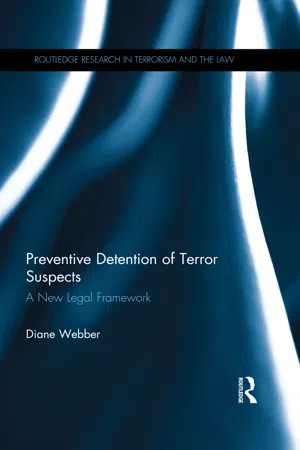ICCPR
The issue of territorial reach is particularly relevant to whether the ICCPR applies to the practice of detention by the United States in Guantánamo Bay, Afghanistan and Iraq, and by Israel in the Occupied Territories. Contrary to most other countries, the United States has consistently maintained that its human rights obligations do not apply extraterritorially.20 The United States eschews international human rights laws as far as LOAC detention in Guantánamo and Afghanistan is concerned, and presumably will do so in respect of any future detention in any place outside of the United States.
Israel’s position is that the ICCPR and similar instruments “did not apply directly to the current situation in the occupied territories.”21 Israel maintains that it has been in a state of emergency since 1948 and has derogated from its ICCPR obligations.22
The interpretation of Article 2 has been, and still is, the subject of extensive debate and discussion, by the HRC,23 the International Court of Justice (ICJ),24 human rights organizations,25 and scholars.26 The debate centers round whether certain words are to be interpreted conjunctively or disjunctively.27 The controversy derives from the interpretation of highlighted words of Article 2(1): “Each State Party to the present Covenant undertakes to respect and to ensure to all individuals within its territory andsubject to its jurisdiction the rights recognized in the present Covenant …” (emphasis added).
No presumptions can be found either against or in favor of extraterritoriality in international law, and the only guidance that can be discovered is in the “text, object and purpose of each particular treaty.”28 The basic rule governing interpretation of treaties is in Article 31 of the Vienna Convention,29 which prescribes looking at the ordinary meaning of the words. However, if the meaning is “ambiguous or obscure” or “leads to a result which is manifestly absurd or unreasonable” then recourse may be had to “supplementary means of interpretation, including the preparatory work of the treaty and the circumstances of its conclusion.”30 It has often been necessary to turn to the travaux préparatoires that documented treaty negotiations, but the debates have not always reached clear conclusions.
It might seem obvious to read the words conjunctively, as do the United States31 and Israel,32 but the literature suggests that the position is far from clear. One suggestion is that the conjunctive interpretation could lead to a result that is inconsistent with the object and purpose of the ICCPR or one that is manifestly absurd.33 It is therefore pertinent to see what light, if any, is shed on the interpretation of the relevant words in the travaux préparatoires. The United States had introduced the notion of territory into the drafting, and had suggested the wording that found its way into the final form of Article 2(1).34
Many commentators have analyzed the explanation given by the United States delegate, Eleanor Roosevelt, that the purpose of the wording in Article 2(1) was to make it clear that the draft Covenant would apply only to persons within the territory and subject to the jurisdiction of contracting states.35 The context of her comments is important as she was concerned that the ICCPR might oblige state parties to enact legislation that affected persons who, although outside their state’s territory, were technically within its jurisdiction for certain purposes, such as those in the then occupied territories of Germany, Austria, and Japan.36
However, according to Michal Gondek, Eleanor Roosevelt did not clearly explain how the phrase “within the territory and subject to its jurisdiction” was to be interpreted. He opines that the United States intended to avoid acquiring positive obligations by legislating with regard to persons in occupied territories in situations that were outside United States jurisdiction as an occupying power.37 In short, it may be that the rationale in this particular context was to avoid assuming obligations that a state could not meet.38 Dominic McGoldrick supports this interpretation, noting that the record in the travaux préparatoires affirms that the words would have to be read disjunctively in order to protect the Covenant rights.39
Quite soon after the coming into force of the ICCPR in 1976, the HRC began to depart from the literal reading of the text.40 It then “abandoned the literal meaning altogether” in its General Comment No. 31 of 2004,41 instead prescribing a disjunctive interpretation – that the rights be available to all individuals who may find themselves in the territory or subject to the jurisdiction of the state party.42 This formula is repeated in General Comment 35 of 2014.43
The ICJ has commented that the travaux préparatoires confirm the HRC’s interpretation of Article 2(1),44 although Dennis and Surena consider it significant that the ICJ did not cite General Comment 31 in its opinion,45 but relied on the HRC rulings in Lopez Burgos 46v. Uruguay and Celiberti v. Uruguay.47 The commentators are firmly of the view that the travaux préparatoires confirm the conjunctive interpretation.48 In support of their argument they point to the words of HRC member Christian Tomuschat in Lopez Burgos concerning the correct interpretation of Article 2(1) that “[t]he formula was intended...
